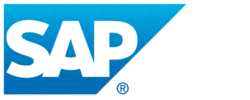 SAP recently confirmed the impressive preliminary Q2 financial results they released earlier this month. In a recent conference call with analysts, CEOs Jim Hagemann-Snabe and Bill McDermott provided key details on the performance of their company and shared some insights about their biggest rival, Oracle.
SAP recently confirmed the impressive preliminary Q2 financial results they released earlier this month. In a recent conference call with analysts, CEOs Jim Hagemann-Snabe and Bill McDermott provided key details on the performance of their company and shared some insights about their biggest rival, Oracle.
With regards to SAP’s Q2 performance, McDermott stated that it’s their best performance to date, with the company seeing a 20% faster growth compared to Oracle when it comes to the enterprise applications market. The picture is even better when it comes to regional performance, with SAP managing to grow at a rate four times faster than Oracle in Europe and EMEA, while their performance in AsiaPac and Japan grew eight times faster.
SAP’s performance is further emphasized by 1.06B euros (roughly $1.29 billion) in software revenue, as well as a 15% increase over the previous year’s software and related service revenues. SAP managed to rack up gains in all regions, particularly in EMEA, Africa, and Europe. Their impressive performance in Europe is worth noting since there was a glut of forecasts stating that the region is suffering from weak software sales during that same period.
McDermott stated that his company is closely monitoring the debt crisis in Europe, but was able to see a potential in the Northern Europe’s ability to offset the weakness in the Southern parts of the region. McDermott further stated that they can help companies who want or need to cut costs, be more productive, and optimize operations in order to compete with the rest of the market.
SAP’s performance in the US is also positive, netting a 32% increase in software revenue within the previous year’s record, building a solid momentum and boasting of double digit growth.
SAP’s performance was received by Wall Street analysts with cautious optimism, with experts agreeing that SAP’s management must make an effort to convince investors that the company did not sacrifice its pipeline just to come up with an aggressive Q2 guidance. McDermott insists that SAP never rushed any deals from Q3 just for the sake of having it show on the Q2 reports.
The SAP database pipeline, called Hana, currently exceeds $1.8 billion, while their mobile apps and infrastructure pipeline exceeds $966 million, with their core pipeline managing a double digit increase over 2011’s Q2. McDermott further states that their mobile, Hana, and cloud computing sales are all expected to see triple digit growths. Of course, the cloud’s performance is not a surprise since SAP has recently acquired the popular SuccessFactors last February.
Another factor that could boost SAP’s cloud revenue is the planned acquisition of Ariba, which is estimated to cost $4.3 billion. However, SAP execs admit that the acquisition will be pushed further back in to Q4 in order to comply with the requests of US regulators, who still need more information about the acquisition. SAP CFO Werner Brandt describes said request as par for the course in the business, and that they are optimistic about the deal being approved.
When it comes to their 10 consecutive quarters of 2 digit growth, SAP co CEO Jim Hagemann-Snabe says that their solid strategy of delivering innovations via mobile, Hana, and edge applications without disrupting core applications like analytics and ERP is the proper way of doing things. Hagemann-Snabe cites Oracle’s strategy as a contrast, saying that their rival is more into hardware that can disrupt IT landscapes. This allows SAP to win 8 out of 10 deals when competing against the company.
In a time where total IT costs, particularly hardware, is growing by a maximum of 5% per year, SAP is poised to take advantage of businesses’ aversion to IT disrupting changes and their understandable needs to keep spending at a minimum without sacrificing quality.